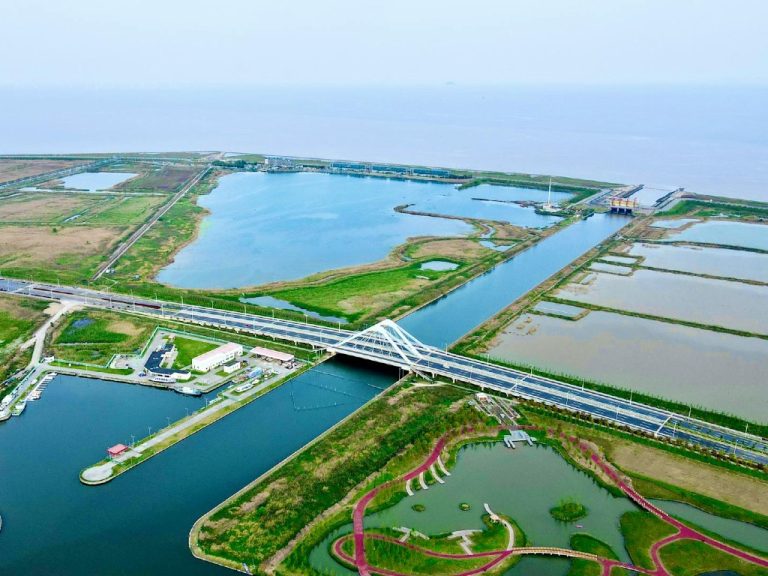Land-use and development decisions may have a greater impact on coastal flood exposure in China than sea-level rise itself, according to a major international study.
Researchers have shown that development policy plays a key role in exposing millions of people and trillions of dollars of infrastructure to flooding in China by 2100 – in fact, these decisions could have a larger impact than rising seas.
This critical reframing of coastal vulnerability in China shifts the challenge of future flood management from purely climate mitigation to integrated spatial planning and governance: where and how societies build.
New integrated framework combines drivers
The research, published in Nature Climate Change, was led by Wang Yafei of the Chinese Academy of Sciences and Murray Scown of Lund University, including contributions from the Tyndall Centre’s Robert J. Nicholls and affiliate member Detlef P. van Vuuren. The team warns that unchecked urban expansion into vulnerable low-lying zones in China could amplify flood risk significantly.
The authors have developed a novel, integrated framework that – for the first time – combines three critical, interacting drivers of coastal flood risk: land-use policies, climate factors (including sea-level rises, storms, and tides), and land subsidence. By linking high-resolution land-use data with diverse policy scenarios and established IPCC climate projections, the study demonstrates the decisive role of policy in amplifying or reducing future exposure.
Across a wide range of scenarios to 2100, spatial development pathways exert stronger control over exposed population, GDP, and critical land uses than differences in sea-level rise assumptions.
The study also identifies four major vulnerability hotspots in China: the Pearl River Delta, the Yangtze River (or Chang Jiang) Delta, the Liaohe River Delta, and Bohai Bay. These regions already host large populations and economies, illustrating how today’s development decisions – particularly around coastal urbanisation – will shape future resilience.
Rethinking resilience and the “levee effect”
While climate mitigation remains essential, it is not enough to manage coastal flood risk: we urgently need a more nuanced understanding, which includes coordinated spatial planning and development governance.
Flood protection is currently China’s dominant adaptation strategy, but this can create a “levee effect” – a false sense of security that encourages further development in protected areas, raising the cost of future breaches.
The team hopes the study will encourage wider use of integrated assessment models to analyse future flood exposure and identify the most influential drivers of risk. They also advocate for strategic, comprehensive spatial planning and green adaptation measures – in China and beyond.
In the long term, reducing global carbon emissions remains vital to avoid accelerating sea-level rise, which could become the dominant risk factor in the 22nd century.
Meanwhile, the study’s core policy message is clear: the most powerful agency to reduce coastal flood exposure in the coming decades lies not in fighting the sea, but in managing the land. Governments must act decisively on development policy today to secure coastal futures.
- Read the paper: “Development policy affects coastal flood exposure in China more than sea-level rise” (Wang et al., Nature Climate Change, 2025
- Read the policy brief of the paper: “Managing development choices is essential to reduce coastal flood risk in China”
- Discover our research theme on adaptation and resilience







